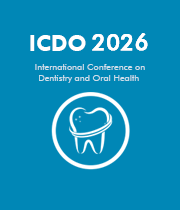Title: Conventional endodontic therapy in the treatment of extensive radicular cyst
Abstract:
Current practice accredited cyst surgery as therapeutic approach of choice leading in some cases to important bone loss and teeth loss, difficult to recover. Radicular cyst has a membrane and a content and according to recent studies, cystic lesions are maintained due to the presence of irritants in cystic cavity.
It is widely accepted (1) that after proper nonsurgical endodontic therapy, most periradicular lesions except apical true cysts heal, but it was not very clear how the epithelium of apical cysts regress after conservative treatment. Recent studies (2) suggest that the process is most likely caused by apoptosis or programmed cell death. Once the irritants from the canals are removed by chemomechanical instrumentation and the canal is completely sealed, all cell components participating in inflammatory reaction will gradually resolve (inflammatory mediators, proinflammatory cytokines, growth factors). As a consequence, the restricted-potential basal stem cells in the epithelial strands or lining epithelium of cyst will stop proliferating. Recently, the correlation between apoptosis and the regress of lining epithelium of apical cysts after nonsurgical endodontic therapy was immunohistochemically demonstrated (3).During treatment, samples of cystic fluid can be collected and analysed to determine the level of IL-1-beta and TNF-alpha as markers of inflammation (electrochemiluminescent immunoassay, ECLIA).
The aim of the present study was to address and validate a methodology for conservative treatment of radicular cysts based on clinical and radiological examination. Patients were subject to root orthograde treatment and surgical decompression of cavity cyst, simultaneously. The cases were monitored clinically, where CBCT radiography was performed before treatment as well as 3 months, 6 months, 12 months after. The radiographic images were evaluated based on Periapical Index (PAI) of Örstavik by two previously trained examiners. Finally, the study sought to demonstrate that removal of irritants from cystic cavity through a conservative treatment (root orthograde surgical therapy with or without surgical decompression) lead to periapical wound healing by triggering apoptosis and regression of the lining epithelium of the apical cyst.
(1)Shah N,Logani A,Kumar V A minimally invasive surgical approach for large cyst-like periapical lesions: a case series. Gen Dent.2014 Jan-Feb;62(1):e1-5.
1)Loyola AM, Cardoso SV, Lisa GS, et al. Apoptosis in epithelial cells of apical radicularcysts. Int Endod J 2005;38:465–9.
(3) Suzuki T, Kumamoto H, Kumimori K, Ooya K. Immunohistochemical analysis of apoptosisrelated factors in lining epithelium of radicular cysts. J Oral Pathol Med 2005;34:46 –52.




